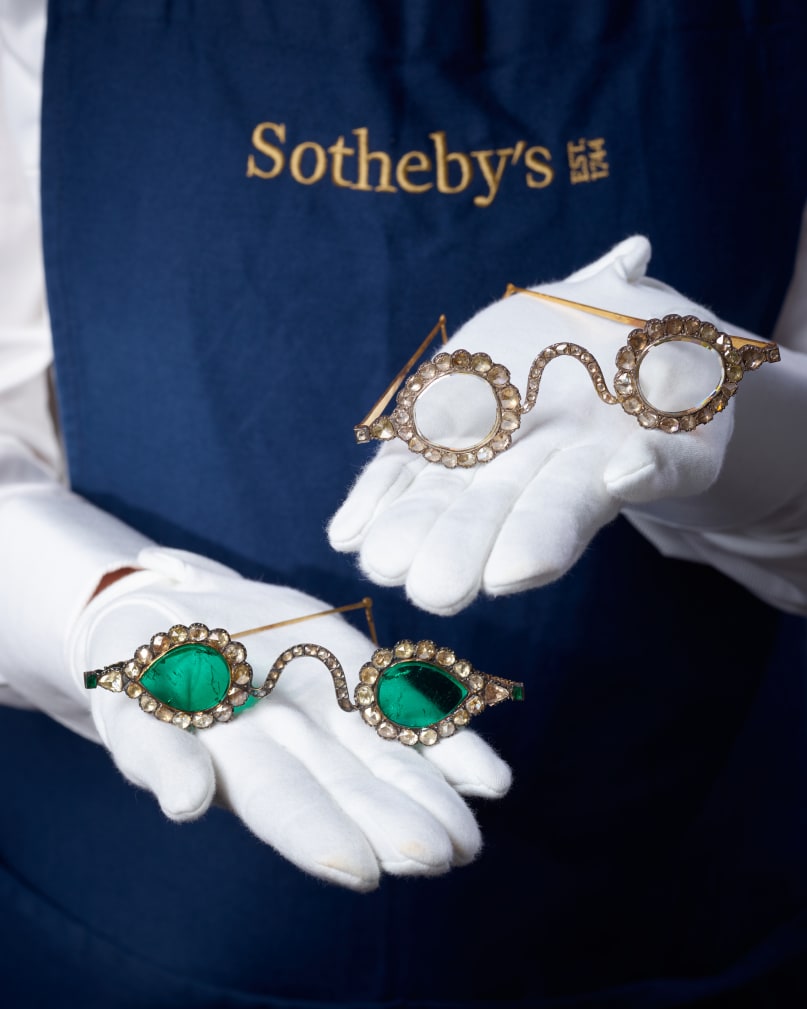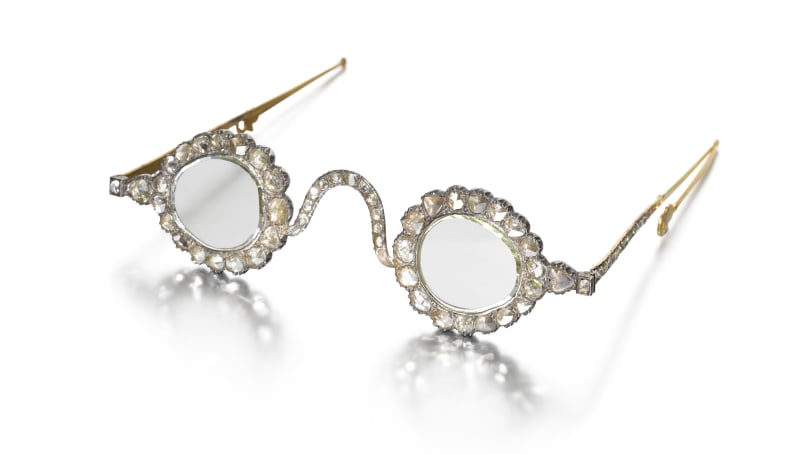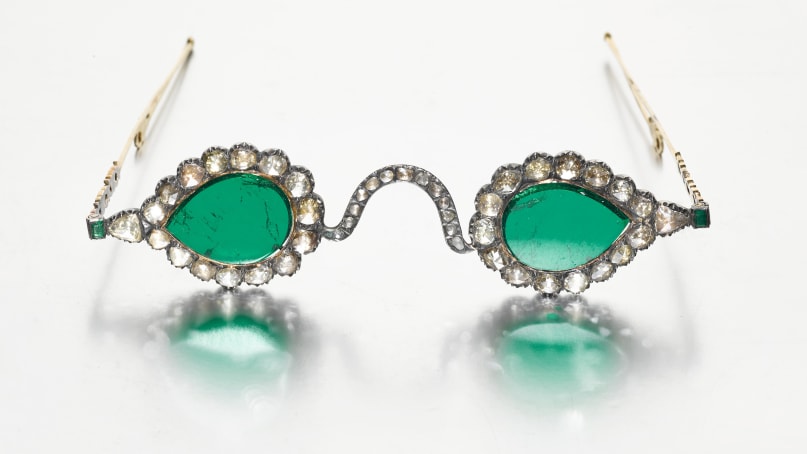The $3.5 million spectacles said to ward off evil
Published 14th September 2021

Credit: Courtesy of Sotheby's
Written by Megan C. Hills, CNN
"Two pairs of 17th-century glasses are expected to fetch millions of dollars at auction next month. The jewel-encrusted spectacles, which feature lenses made from diamond and emerald rather than glass, are believed to have originally belonged to royals in the Mughal Empire, which once ruled over the Indian subcontinent.
Designed to help the wearer reach enlightenment and ward off evil, they are set to go on public display for the first time ever as they tour New York, Hong Kong and London ahead of the October sale.
The spectacles are an exceptionally rare example of Mughal jewelry craftsmanship, according to chairman of Sotheby's Middle East and India, Edward Gibbs. "As far as we know, there are no others like them," he said in a phone interview.

The spectacles are expected to fetch up to $3.5 million each. Credit: Courtesy of Sotheby's
The items' rarity is also down to the sheer size of their gemstone lenses. The lenses in one pair, known as the "Halo of Light" spectacles, are believed to have been cleaved from a single 200-carat diamond found in Golconda, a region in the present-day Indian states of Andhra Pradesh and Telangana. (Sotheby's estimates the original diamond was "possibly the largest ever found.") The green lenses of the second pair, dubbed the "Gate of Paradise," are meanwhile believed to have been cut from a Colombian emerald weighing over 300 carats.
The size of the original stones hints at the identity of the spectacles' first owners, with Gibbs speculating that the glasses "could only have belonged" to an emperor, his inner circle or a high-ranking courtier. He said, "Any gemstone of this size, magnitude or value would have been brought straight to the Mughal court."
The gemstones were highly prized in Islamic and Indic traditions, where they had strong associations with spirituality. According to Gibbs, diamonds were associated with "celestial light" and "enlightenment" in Indic societies, as the bright stones were believed to be "vehicles for astral forces" that could channel the auspicious intentions of the universe.

The lenses of the "Halo of Light" spectacles are believed to have been cut from a single 200-carat diamond. Credit: Courtesy of Sotheby's
Green is also a color closely linked to paradise, salvation and eternal life in Islam, the religion practiced by the Mughal rulers. Viewing the world through these emerald-tinted glasses would, therefore, have had special significance, with Gibbs suggesting that the experience may have "led you through the gateway into paradise" by offering "a glimpse of the verdant sea of the green paradise that awaits."
Royal precedent
The Mughal Empire was renowned for advancing jewelry craftsmanship across South Asia, and these spectacles are an example of its jewelers' talents. In the 17th century, the Indian subcontinent was the "sole source of diamonds in the world," according to Gibbs.
The region was, therefore, home to some of the era's most advanced techniques. Creating these lenses would have required "extraordinary technical skill and scientific mastery," Gibbs said, as Mughal gemstone cutters would have carved them by hand with no room for error.
"There's a huge risk involved with the cutting of the stone and the size," he added. "If it goes wrong, you lose the stone."
Gemologists visiting the Mughal court from Europe most likely influenced the glasses' design, said Gibbs, who described the items as a "meeting of European and Indian technology and ideas." The arrival of Jesuit missionaries, some of whom wore pince-nez glasses (which balance on the nose and have no arms), may also have influenced the spectacles' original frames. In the late 19th century, however, both sets of frames were replaced with the current ones, which feature numerous rose-cut diamonds along the lens rims and bridge.
Colored lenses had been favored by the likes of Emperor Nero, who wore green gemstone spectacles to "soothe his eyes from the sight of the blood" at Roman gladiator games, Gibbs said. France's King Charles V, meanwhile, is thought to have worn beryl spectacles in the 14th century. According to Sotheby's, a similar story surrounds Mughal emperor Shah Jahan, who is said to have used emeralds to soothe his tired eyes after weeping for days following the death of his wife Mumtaz Mahal (for whom he built the Taj Mahal as a tomb).

The "Gate of Paradise" glasses are thought to have been cut from a Colombian emerald. Credit: Courtesy of Sotheby's
Sotheby's estimates the two pairs of spectacles will sell for between ... "
https://www.cnn.com/style/article/diamo ... index.html